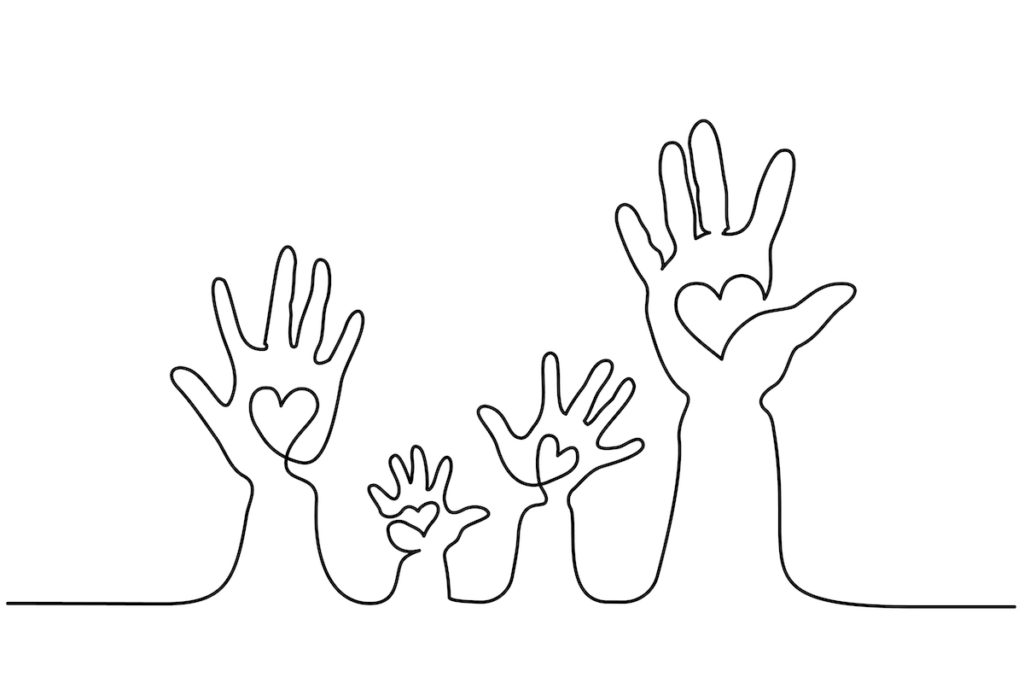
Clinicians and health services are often concerned with risks of self-inflicted harm for people who have a diagnosed psychiatric disorder. This is an appropriate response; risks of self-harm and suicide are considerably higher for these individuals (Singhal et al., 2014). However, the likelihood of those with a diagnosed psychiatric disorder being a victim of violence or being violent towards others is not well-understood.
People with psychiatric disorders face excess risks of physical comorbidity (Bell, 2018), self-harm (Chai et al., 2020), suicide (Singhal et al., 2014) and other causes of premature death (Hayes et al., 2017). Other Elf bloggers have previously drawn attention to the striking ‘mortality gap’, a term which describes the lower life expectancy among people with severe mental illness.
Previously, estimated risks of violence victimisation and perpetration have been imprecise, with large ranges, reflecting the relatively small and unrepresentative samples used to estimate these risks (Sariaslan et al, 2020). Sariaslan and colleagues, in their study published in JAMA Psychiatry (2020), aimed to estimate population-level risks of being subjected to violence and of perpetrating violence among people with a psychiatric diagnosis.

People diagnosed with a psychiatric disorder have higher risks of many adverse outcomes, including early death, but what about risks of being a victim or perpetrator of violence?
Methods
Sariaslan and co-authors used nationwide Swedish registers to examine risks of being subjected to and of perpetrating violence. Their national sample included over a quarter of a million people born between 1973 and 1993 who were diagnosed with a psychiatric disorder when they were over 15 years old.
Cases were individuals treated for a psychiatric disorder in outpatient or inpatient settings. They were compared to two control groups with no psychiatric disorder:
- Swedish residents in the general population (with each case matched to 10 controls by sex and birth year), and
- Full biological siblings.
Using two sets of control groups provided information about the extent to which the findings were likely to be confounded by familial factors. In other words, how much of the measured risks of violence were likely to be related to the psychiatric disorder and how much was explained by the family context?
Subjection to violence was identified from inpatient or outpatient treatment or death following injuries inflicted by another person. Convictions for violent offences were used to identify people who perpetrated violence.
The authors presented two types of results:
- First, they used incidence rates to estimate the absolute risk of each violence-related outcome. Absolute risks represent the risk of an event for a group of people during a defined time period. Sariaslan et al. presented rates per 1,000 person-years. Each person-year corresponds to the time spent in the study by one person.
- Second, relative risks were estimated, comparing the risk in one group to another. While a person’s relative risk can be high when compared to another group, their actual risk can remain low.
Risks were adjusted incrementally for potential confounding factors:
- Model 1 only accounted for birth year and sex.
- Model 2 included additional adjustment for birth order and parental background (including violent criminal conviction and psychiatric disorder).
- Model 3 accounted for individuals’ own history of subjection to and perpetration of violence prior to receiving a psychiatric diagnosis.
- Model 4 included adjustment for unmeasured childhood family environment by using the matched sibling controls, as well as the individual factors from Model 3.
Differences in risk by sex and between psychiatric diagnoses were also examined.

This research looks at how much of the measured risks of violence were likely to be related to the psychiatric disorder and how much was explained by the family context.
Results
- Similar proportions of people with a psychiatric diagnosis were subjected to violence (incidence rate 7.1; 95% CI, 6.9 to 7.2) and perpetrated violence (incidence rate 7.5; 95% CI, 7.4 to 7.6) per 1,000 person-years. Over a ten-year period, the absolute risk of either violent outcome was just over 6%. The authors reported that there was ‘moderate’ co-occurrence of the two outcomes; some patients with a psychiatric diagnosis were both victims and perpetrators of violence
- Compared to general population controls, people with a psychiatric disorder were:
- more likely to be a victim of violence (relative risk 7.4; 95% CI 7.2 to 7.5)
- more likely to perpetrate violence (relative risk 11.2; 95% CI 10.9 to 11.5)
- When using siblings as controls, these risks dropped to:
- more likely to be a victim of violence (relative risk 3.4; 95% CI 3.2 to 3.6)
- more likely to perpetrate violence (relative risk 4.2; 95% CI 3.9 to 4.4)
- This suggests that unmeasured family factors influenced risks of both subjection to and perpetrating violence
- Relative risks varied according to psychiatric disorder:
- Schizophrenia was associated with an increased risk of perpetration but not victimisation
- Both violent outcomes were most common among those with substance misuse disorders.
- Women’s absolute risks of violence victimisation and perpetration were lower than men’s, but the relative risk of being subjected to violence among women with a psychiatric disorder was slightly higher than for men.

This study found that people with a psychiatric diagnosis have a higher risk of being a victim or a perpetrator of violence.
Conclusions
This large, population-based study found that people diagnosed with a psychiatric disorder were 3 to 4 times more likely to be a victim of violence and to perpetrate violence when compared to their siblings with no psychiatric disorder. Some differences between specific diagnoses were found. Patients with substance misuse disorder were found to be at particularly high risk. The authors explain:
Our findings underscore the need to address comorbid substance use and personality disorders to develop scalable approaches that assess and manage the risk of subjection to and perpetration of violence in people with psychiatric disorders.

The researchers conclude that “scalable approaches that assess and manage the risk of subjection to and perpetration of violence in people with psychiatric disorders” are needed.
Strengths and limitations
This study made use of national Swedish registry data, meaning that the data are highly representative of the country. The use of sibling comparisons helped to account for hard-to-measure differences in family circumstances between cases and controls. Such factors could include social and environmental factors as well as genetic vulnerability. Therefore, this study was able to build on previous findings by unpicking causal links between psychiatric diagnosis and violence risks.
However, while siblings are likely to have similar upbringings, they do not share all their experiences, therefore sibling matching cannot account for all unmeasured confounding factors.
Moreover, the study is limited in its inability to comment on the causes of violence perpetration and victimisation. The findings of this study do not lead to the conclusion that psychiatric disorders cause violent crime, any more than they cause violence victimisation; only that there is an association.
As the authors point out, their approach only captured victims of violence that were treated in hospital. Likewise, only acts of violence perpetration that resulted in criminal conviction were included. Measuring violence that does not reach the attention of health or criminal justice services is much more challenging, but would be likely to result in more conservative risk elevations.
The most common forms of violence against women are sexual violence and domestic abuse, and women with mental health disorders are more at risk than those without (Lambert, 2016). Yet the majority of these offences do not reach the attention of criminal or health services, so they would not appear in the registers used by Sariaslan et al. Could the lower absolute risks of violence victimisation among women found by Sariaslan et al. reflect under-reporting and low conviction rates of these crimes? If so, the risk of being subjected to violence could be much higher than this study suggests. The authors do not discuss this possibility, but it is an important limitation of studies using these data types.
Finally, while the results are generalisable to Sweden, the risks reported in this study may not accurately reflect associations in other settings, particularly where universal access to free-at-point-of-contact healthcare is not available. In such contexts, lower access to mental health treatment or lower rates of diagnosed mental disorder may modify the strength of associations.

The use of nationwide Swedish registers enabled the authors to study risks of violence victimisation and perpetration at a population level.
Implications for practice
Why is it important for practitioners to consider these outcomes? People who have perpetrated or been subjected to violence experience significant suffering and shortened life expectancy (Steeg et al. 2019, Stenbacka et al, 2012). This contributes to the health inequalities faced by people with mental disorder (Harrison and Tracy, 2017).
Mental health awareness campaigns, such as Time to Change, have been keen to note the potential damage caused by media reports of violence by people with mental disorder. While risks of violence perpetration need to be acknowledged, this is only part of the picture. The high threshold for acts of violence subjection used in this study means we may only be seeing the tip of the iceberg. Violent acts with low reporting and conviction rates, such as sexual violence and those of lower severity, are particularly likely to be hidden beneath the surface.
A recent study noted the high risk of self-harm among people with substance misuse disorder compared to other psychiatric disorders (Chai et al 2020). Taken together with Sariaslan et al’s findings, there is a clear need to address the particularly high risks of a multitude of adverse outcomes for these individuals. However, the complexity of treating substance misuse, particularly where there is additional comorbid psychiatric disorder, is considerable. While policies are beginning to acknowledge the unique needs of people with substance use disorder and other mental health problems (NICE, 2016), much still needs to change in practice (Padmanathan et al, 2019). Very few interventions targeting this group of patients have been tested.

Addressing increased risks of violence victimisation and perpetration for people with psychiatric disorders requires confronting comorbid substance misuse.
Statement of interests
None.
Links
Primary paper
Sariaslan A, Arseneault L, Larsson H, Lichtenstein P, Fazel S. Risk of Subjection to Violence and Perpetration of Violence in Persons With Psychiatric Disorders in Sweden. JAMA Psychiatry. Published online January 15, 2020. doi:10.1001/jamapsychiatry.2019.4275
Other references
Bell, A. Physical health inequalities in primary care. The Mental Elf, 25 October 2018.
Chai Y, Luo H, Wong GHY, et al. (2020) Risk of self-harm after the diagnosis of psychiatric disorders in Hong Kong, 2000–10: a nested case-control study. Lancet Psychiatry 2020; 7(2)
Harrison, J and Tracy, D. People with severe mental illness die younger and things are getting worse. The Mental Elf, 1 September 2017.
Hayes JF, Marston L, Walters K, King MB, Osborn DPJ. (2017) Mortality gap for people with bipolar disorder and schizophrenia: UK-based cohort study 2000–2014. The British Journal of Psychiatry Jul 2017, bjp.bp.117.202606; DOI: 10.1192/bjp.bp.117.202606
Lambert N. Violence and women’s mental health: new review summarises the evidence. The Mental Elf, 16 December 2016.
National Institute for Health and Care Excellence (2016). Coexisting severe mental illness and substance misuse: community health and social care services. NICE guideline [NG58]
Padmanathan P, Hall K, Moran P, et al. (2019) Prevention of suicide and reduction of self-harm among people with substance use disorder: A systematic review and meta-analysis of randomised controlled trials. Comprehensive psychiatry 2019; 96: 152135.
Singhal A, Ross J, Seminog O, et al. (2014) Risk of self-harm and suicide in people with specific psychiatric and physical disorders: comparisons between disorders using English national record linkage. Journal of the Royal Society of Medicine 2014; 107(5): 194-204.
Steeg S, Webb RT, Mok PLH, et al. (2019) Risk of dying unnaturally among people aged 15-35 years who have harmed themselves and inflicted violence on others: a national nested case-control study. Lancet Public Health 2019; 4(5): E220-E8.
Stenbacka M, Moberg T, Romelsjo A et al. (2012) Mortality and causes of death among violent offenders and victims—a Swedish population based longitudinal study. BMC Public Health 2012; 12(3).
Photo credits
- Photo by Sarah Brown on Unsplash
- Photo by Franck V. on Unsplash
- Photo by Mohammed Hassan on Unsplash
- Photo by Zane Lee on Unsplash
- Photo by Ishan @seefromthesky on Unsplash
- Photo by Roberto Carlos Roman on Unsplash
